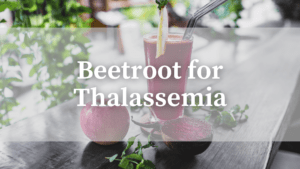What is Wheatgrass?
Wheatgrass is the young, nutrient-rich version of the wheat plant, harvested at 7 to 10 inches tall.
At this early stage, wheatgrass is packed with potent vitamins, minerals, and antioxidants, making it a powerful natural remedy for various health conditions—including Beta Thalassemia Major.
Read the complete list of supplements I recommend for Thalassemia Major. I’m taking them too.
Benefits of Wheatgrass for Beta Thalassemia Major
Recent studies have revealed that wheatgrass can help increase hemoglobin (HB) levels while chelating excess iron—a game-changer for thalassemia warriors!
Can you believe that?
Wheatgrass naturally boosts red blood cell production while simultaneously helping remove excess iron from the body!
Early detection saves lives! Recognize the 7 key symptoms of iron overload in thalassemia here.
Other health benefits of wheatgrass:
✔ Boosts immunity
✔ Acts as a powerful antioxidant
✔ May help reduce cholesterol levels
✔ Improves energy levels
✔ Enhances overall quality of life for thalassemics
Even though wheatgrass is promising, I highly recommend consulting your doctor before starting.
How Much Wheatgrass Should You Take?
If using wheatgrass tablets or powder, follow the dosage on the product label.
I personally start with a lower dose and slowly work my way up—this helps me monitor side effects and adjust accordingly.
Whenever possible, fresh wheatgrass juice is the best option! One glass in the morning works wonders.
Best Time to Drink Wheatgrass
Through experience, I’ve found that the best time to drink wheatgrass is early morning, right after waking up.
You might want to experiment and see what works for you! However, I wouldn’t recommend drinking fresh wheatgrass juice at night, as it might cause digestive discomfort.
If you’re constantly on the move, wheatgrass supplements or powders might be more convenient—but fair warning, the taste takes some getting used to! 😬
Side Effects of Wheatgrass
Some general side effects include:
🔹 Nausea
🔹 Vomiting
🔹 Stomach-related issues
Luckily, I did not get any of these side effects. But even if someone does, they usually subside in a few days.
To minimize discomfort:
✅ Start slow and monitor how your body reacts
✅ Gradually increase intake based on tolerance
✅ Never exceed the recommended dosage
Most importantly, consult your doctor before starting wheatgrass so any side effects can be properly managed.
Which Form of Wheatgrass is Best?
Fresh wheatgrass juice is the best! 🍃If you can afford a juicer, this is the best way to take your wheatgrass. You can try this Brecious Juicer on Amazon (affiliate link) if you don’t have a cold-press juicer at home.
However, fresh wheatgrass isn’t convenient or affordable for everyone.
I’ve also tried powdered wheatgrass, but drinking it daily felt like a task. So, I searched for a more manageable option—one that wouldn’t make me gag!
That’s when I discovered Dr. Wheatgrass Supershots—an Australian product that is potent yet super easy to take!
Why I Love Dr. Wheatgrass Supershots:
✔ No need to drink a full glass! Just a spoonful is enough
✔ Better absorption—hold it in your mouth for a minute before swallowing
✔ Tastes refreshing (unlike some other options)
✔ Saves a lot of time – just pour it into a spoon and drink – done!
Want to try it for yourself?
👉 Order Dr. Wheatgrass Supershots on Amazon
(Affiliate link)
Final Thoughts
Wheatgrass is a natural powerhouse that offers incredible benefits, especially for thalassemia warriors. From boosting hemoglobin levels to chelating excess iron, it’s a game-changer!
But remember: consult your doctor before starting wheatgrass and monitor your body’s response.
Try it out, and you might just see the difference in your blood reports!



